We interview automation expert and previous Apple employee Matthew Cassinelli to discuss the advantages, issues, and integrations of Shortcuts on the macOS Monterey. This interview originally appeared on our weekly AppleInsider podcast, subscribe in Apple Podcasts or wherever you listen to podcasts.
Since the public release of macOS Monterey, users can now create, edit, and sync their iOS Shortcuts directly on a Mac. Announced earlier this year at WWDC, Shortcuts on macOS will also slowly replace the previous automation tool, Automator, bringing one system to the Mac, iPhone, and iPad.
Matthew Cassinelli previously worked on the original Workflow app, which was acquired by Apple in 2017 and evolved into the Shortcuts app. After staying on the team at Apple for a short time, Matthew became an independent creator, helping others learn Shortcuts, and reporting on new actions available with every update.
Ever since Workflow for iOS, Shortcuts on macOS has been highly anticipated, but now it's here, it is not without issues. Matthew discusses some of the shortcomings, including Safari integration issues and Swift UI bugs.
We go on to discuss the advantages of Shortcuts on macOS, including integration with third-party apps such as Hazel, the ability to trigger Shortcuts using multiple methods across the system, and some tips and how to make useful Shortcuts.
Follow our hosts
Shortcuts for macOS Interview Transcript
Stephen Robles: Welcome to a special episode of the AppleInsider Podcast. This is your host, Stephen Robes and today joining me is a very special guest for his second appearance on the AppleInsider Podcast, Matthew Cassinelli. Shortcuts extraordinare. Expert. Maven. I'm not sure what other adjectives to put behind there, but Matthew, thanks so much for joining me again.
Matthew Cassinelli: Hello, hello. Thank you for having me. I appreciate being back on. It is an exciting time with Shortcuts for Mac out.
Stephen Robles: It is an exciting time, also tumultuous, but we'll get to that in a second and just want to say right off the bat, everyone, if you are just getting into Shortcuts or want to learn more about Shortcuts or just get cool ideas and just download them and use them, matthewcassinelli.com
That link will be in the show notes. I have become a member since he was last on the show and you've got some cool stuff on there. So kudos to you. Doing great work.
Matthew Cassinelli: Thank you very much.
Stephen Robles: Absolutely. Well, my question is we have macOS Monterey. It's now publicly available. It came out and I installed it on day one of course, because I was most excited for Shortcuts on the Mac. I didn't run any beta over the summer. I saw guys like you and Federico Viticci, saying it's pretty buggy, you know, maybe not worth it just yet. So I waited. And so now I have it, I've been playing around with it and my question to you, Matthew is why is it broken? Why is all of this broken, what's happening with Shortcuts on the Mac?
Matthew Cassinelli: I mean, maybe as we've seen from the iOS release as well, just because it's out doesn't mean it's not broken.
Stephen Robles: It might still be in beta technically. I don't know.
Matthew Cassinelli: I mean, I've been thinking about the line, "The future of automation" on the Mac and how maybe that implies it's not the present of automation. Because of some of those problems
Stephen Robles: That's savage Matthew.
Matthew Cassinelli: There's a more philosophical part about how, like, even if you are already automating on the Mac, you don't have to replace your current stuff and you can just integrate with Shortcuts too. So that's, I think the bugginess comes from it is a wholly swift UI app.
And so I think some of that is just kind of, maybe not even the Shortcuts team itself, but I think there's also some just philosophical differences about the platforms that I think you're probably running into. And it's just kind of not clear from Apple, whether that's a bug or is just kind of how it is or something like that.
Stephen Robles: My experience was, I have, I'm looking right now 161 Shortcuts, which I know is no comparison to what you and Viticci have. I know you have hundreds and hundreds.
Matthew Cassinelli: I'm a mad man.
Stephen Robles: But I have some that I use very often for work, especially this podcast. Ones that format links and take stuff from my clipboard and, you know, get article titles.
And I use them on my iPad effectively every week. I love them and so I was very excited to just open Shortcuts on my Mac, run the same shortcut with the same formatting tools so I didn't have to break out my iPad. I could just do it all on my Mac. And I've found that most of them just don't out of the box, meaning they worked on my iPad, but they don't work on the Mac.
Has that been your experience it's in this whole transition?
Matthew Cassinelli: I think the main thing that you're running into is the Safari integrations because on iOS, they built in, originally workflow had a tool called "Diffbot," which I just now realized maybe you could actually, if you really wanted to, send your data to this API and get the same information back.
But when, when it was workflow, it basically was a tool to identify whether a link was an article or not. And then if so you can get certain parts of information out of it and, or Safari webpages as an item. In Shortcuts you have special capabilities where you can get the selected text or something like that.
That's all very iOS technology. And so they built what they called the "Safari Reader" integration when they switched away from Diffbot in Shortcuts. And so I just don't think that's on the Mac yet. I think, um, I think that's, what's kind of weird and we sort of expected to be able to get this stuff right away, but there wasn't really communication or even some, some actions actually just say, this doesn't work on the Mac and I believe the Safari ones just fail. So it should just say that it doesn't actually have the error. So it's kind of confusing.
Stephen Robles: Right. And that's, you know, this is a special episode of the podcast, so we can nerd out, get a little deep. And so I want to get some specifics, but before we even get to that, I have Shortcuts up on my Mac right now.
And I just got one of these Sophie's Choice, Schrodinger Shortcuts problems, where I opened a shortcut and it says, "This real code was modified on October 30th on this device. Then it was modified again on November 7 also on this device."
Matthew Cassinelli: I think those errors are wrong. This is live feedback. I think one of those titles is incorrect and it, so it should say that it was modified on a different device, but like there's some sort of even simple overwrite error.
It's fascinating having gotten into Shortcuts because I understand some just like simple programming problems that would happen. Like if I was doing the shortcut where I used "get item from list" and had the wrong index, that's all that this problem could be, but when you're using it and you're like, I don't understand this. It's trying to differentiate between the same device, which doesn't even make sense.
Stephen Robles: So do you default to just like the newest version, like whatever, the latest thing was.
Matthew Cassinelli: Yeah. Definitely. I mean, that's also why I try to back up my Shortcuts as well, because I'm trying to build these for people. And as like my, like this podcast is your thing, Shortcuts are my thing. And so I have to keep them backed up.
Stephen Robles: Yeah. And so now that you are making Shortcuts for both or all platforms, iPhone, iPad, and now the Mac, how has your process changed in like how you start building a shortcut? Has it changed at all or does it remain unchanged or how do you make it? Do you make some specifically just for iOS or do you try to be cross-platform from the beginning on every new thing you make?
Matthew Cassinelli: I think I leaned towards making it just work, regardless because I didn't want to have second Shortcuts for the same task on a different platform, especially if it was just trying to accomplish the same thing. And one of the biggest things for me with the iPad and the iPhone, and then when they brought back the Apple Watch, which was also there for Morpho, take it a couple of years and fixed it up.
You kind of build once and deploy everywhere sort of thing. Obviously. I mean, you do have to make some considerations and I probably make the least for the Apple Watch actually, just because I have hundreds and hundreds, I'm not going to be running hundreds for my Watch.
So I don't really need to think about it. But, um, I definitely like a shortcut that just works everywhere because if you just run it and it fails. Especially because I'm giving them to other people, if you run it and it fails, you just don't understand why, and you're never going to be able to fix it.
So I want it to guarantee at least that anybody who picked up a shortcut could run it. Apple also thought about this. And so in Shortcuts in iOS 15, or I guess, Shortcuts for Mac. Wow. I'm so used to saying that, um, There's a capability in the if action, which allows you to create conditional flows for different things that you want to happen.
And in there you can get the device details and extract this device type is Mac or iPad or iPhone. And so you used to always be able to use the "get device details" action, but now they added it just built into the if action. So you don't have to do it 800 times. Like I would have had that action in every single one of my Shortcuts.
Now it's just, if, and so it's like, if it's on the Mac, do this, if it's not on the Mac, do something else. And I've even had one or two clever uses where this was always, this was very specific, but I use the device name. And if I, if it had the word book in it for MacBook Pro or MacBook Air, it, um, for the, this is just like dumb, but the energy saver preference pane in the system preferences on Mac is called battery.
If you're on a mobile device or a mobile laptop versus a Mac mini. And so it had to have like an if conditional based on the name, not just the device type.
Stephen Robles: Wow.
Matthew Cassinelli: Yeah. So you can get pretty specific. Um, but I think it, it creates for just more clever opportunities. And I do really like, just being able to do the exact same thing that you would on your computer, on your phone really quick when you need to, because otherwise, if you don't account for that, you're just kind of like left in the dust.
Stephen Robles: Absolutely. Now, one of the things I have Shortcuts for sharing my different podcasts and we'll put some Shortcuts in the show notes. So you listeners can maybe download them and try them out. But I have this one short code where I tweet about the AppleInsider Podcast every week. And I want to get the link from Apple podcasts, from Overcast and then Spotify or Pocket Casts, whatever I feel like is winning at the time.
And I want to get the links to the specific episode from each of those services. And Shortcuts makes it really easy where I can actually get the Apple podcast URL without ever looking at anything. It can just load the last item from a particular podcast in my Apple Podcasts app. Get the URL and done, and then I can use it in a text block later.
But for overcast, you actually have to open, what I have is an "open a Safari view" to AppleInsider in Overcast. Like the show. And then I tap and hold and copy to get the URL for that specific episode, I hit done. And then the shortcut keeps going and it'll do whatever. That's on iPhone or iPad. But on Mac, when you have that open a Safari website, you have just a little red x in this pop-up window and when you click it, it just stops the shortcut.
What other like weird quirks have you been running into like that? Is it mainly just the Safari stuff? I guess that's the majority of what I use it for
Matthew Cassinelli: I think some of those native iOS technologies they brought over, but can just be kind of odd sometimes.Like that is even, there's a "show webpage" action instead of the "open URL."
Stephen Robles: Yeah, that's exactly what I do.
Matthew Cassinelli: I guess it's a Safari view controller where it just pops up on top of the app, but on the Mac, it's just like this tiny little window, because it doesn't really make sense in a way that it's built on iOS.
So I think, I think the most unfortunate part is just that all of us power users are the most likely to run into those edge cases. While also Shortcuts is like let's deploy a brand new technology on a brand new stack across the entire platform. And the people who are gonna use it are the most likely to just dig in and immediately run into all those problems.
Stephen Robles: And build it on a brand new language.
Matthew Cassinelli: Yeah, exactly. So I do think even though I've, I've gone through like a rollercoaster of emotions. So with the feedback app, You have to submit the feedback, especially with Shortcuts, because you're the one who just ran into that for the first time ever, probably or something like that. Like the Shortcuts team doesn't have 2000 Shortcuts and are processing them all. Ah, I want, I wish the team could just have my device and just test them on that.
There's definitely so many bugs, but I think you can actually get them fixed. And I am like, I have a little Shortcuts user group discord, and I've been posting all of the feedback in there. And I think that helps. I don't know, like it just can concentrating it with other people and understanding that these are common problems can help identify.
Like I also can identify usually what the technical problem is versus it just doesn't work is kind of what most people run into. I do think by the way, while you were saying that I have run into the exact same overcast thing, and it turns out that Marco has a stack or a scheme for using the podcast ID from iTunes in the URL, I guess it wouldn't be the episode.
It would just be the show.
Stephen Robles: Yeah he uses the show ID. I like to get the links directly to the episode kind of thing.
Matthew Cassinelli: Dang it. I was hoping I could solve your problem, but I just have to do that. Cause you can look at the current podcast, search it in the podcast app for the ID and then apply that top overcast, the like default URL, and then open into it.
Stephen Robles: So what I have resolved to do is I have a folder in my Shortcuts Mac application, and the folder is called MacOS lists. Basically I'm building Shortcuts just to run on my Mac, you know, just, just to make sure they work and I can just leave those as they are.
So my next question for you is one of the exciting parts of Shortcuts on the Mac is you can trigger them in many different ways. And because it's the Mac and you can have like, system-wide, you can trigger Shortcuts either with a keyboard shortcut or the menu bar. You can put it in the services menu in like different share buttons. So what have you found to be your preferable way to trigger Shortcuts on the Mac?
Matthew Cassinelli: All those are definitely great. It, I have different uses for the different sections. Um, I think the menu bar is just really good for obviously like the most quick access to, especially I've been doing stuff with Apple scripts to press keyboard Shortcuts for me to like log out of my computer. And so I have, um, those up in the menu bar, but I also like that when you hover over an item in the menu bar, there's a little open arrow, which to me means this is the quickest way to open a shortcut.
Like a predefined list of Shortcuts is so essentially if I'm working on something, I'll throw them in the menu bar so that I can just get back to it immediately. Um, that's pretty slick. I also do like the dock icon, if you right click on it, there is an open recent menu. And then there's also a run shortcut menu, which shows you every single one of your folders and any Shortcuts that aren't in the folder.
So I have hundreds of folders, I'll say.
Stephen Robles: Hundreds of folders?
Matthew Cassinelli: Yeah. I'm making my own gallery. Basically. I worked on the workflow gallery. And so what I do now is basically gallery collection type stuff. And so I just think of like anything that I can and make sure it cuts for it. Um, that's amazing. It's like for sound recognition, I can make 10 different Shortcuts or something.
There's a whole philosophical question whether you should have Shortcuts that just do one thing or like a menu, but even that's a good example of the menus are kind of bad on the Mac. So I don't want to click, I don't want to use a keyboard shortcut, go click in the menu that it's just like too slow right now.
I think there are just some rough edges that they could, like, I can't even tell if it's just swift UI or the oddities of technically the Shortcuts team became Mac developers. And I mean, they obviously have always developed Shortcuts and workflow from a Mac. So like that's the part is I just don't understand and haven't honestly talked to them a long time of like, did you guys just not think about that or is that how swift UI works? It's kind of odd sometimes. Again, there's 300 actions and Shortcuts. I think now there's up to like 70 ways to run one single shortcut. If you count every single automation, all of the Shortcuts for Mac features and stuff like that.
Stephen Robles: Wow. So my thing is I was trying to use keyboard Shortcuts to trigger just some simple text format. Shortcuts like remove the question mark UTM, reference tag at the end of a link, but I didn't see any visual cue that my shortcut was running.
Matthew Cassinelli: The menu bar flashes is the main thing.
Stephen Robles: Does it?
Matthew Cassinelli: I use, so I also use the stream deck because Shortcuts can be triggered by any sort of Apple script. And there's an Apple script plugin for the stream deck. So I have physical buttons for every single one of my Shortcuts, which is also very well. I like give I'm giving away those profiles to my members because it's, like I said, I spent hours and hours just clicking and dragging icons.
I generated all of the Apple scripts too. That's amazing. Every time I press the stream deck icon, I can see the menu bar flash. So that's kind of just the subtle thing, but it is weird. I mean, technically you could put like a show result action in to let you know that you finished, but it kind of just depends.
Stephen Robles: Yeah. I just tested it. And it's a very quick flashing of the shortcut. I guess if you have a longer shortcut, it'll be visible. Like it'll change color for a longer time, but for simple texting, it was just like "blip." Flashed real quick.
Matthew Cassinelli: I agree that that's weird, but also at a certain point, that's really awesome because it's just fast.
Like I realized the other day I was, um, trying to log the links for my newsletter into Air Table because after I go through them, I want to just make sure I keep them over time and on iOS, I would have to like right click on each link, go to the share sheet and run the shortcut and then it would run and then it I'd be done.
But on the Mac, I just right clicked and did like log link, and then it was done. That's pretty fun. Then I did it again and it was done and I just went like click, click, click, click, click, click. And I was like, oh my God, because that was just so fast. And I just made 18 API calls to Air Table and I opened the app and they're all sitting in.
And the same thing. It like scraped the titles out of it and everything. So I was like, oh, that was awesome. I was like, oh, Shortcuts is cool.
Stephen Robles: Yeah. I've been a long time TextExpander user where, you know, I have a lot of little Shortcuts for semi-colon these couple of letters and it makes either it's a sponsor HTML paragraph for a post or even just my email address, I have "-em" and it just puts my email address, you know, expands into that. That's, I'll talking to west Hilliard at AppleInsider, who has been iPad only, really as his main work machine. And he just got one of the new MacBook Pros. And so he was trying to see like what Mac apps are really worth it. And I said, oh, TextExpander.
And then we got into a conversation. Can Shortcuts almost replace what's something like TextExpander does like with formatting of text. And I feel like it's, it's close to it. The one thing that Shortcuts can do, correct me if I'm wrong, is if you do have like a text formatting type shortcut, it can't just place the text for you. You always have to end the shortcut with a copy to clipboard, and then you manually command V it in a form or on a page. Is that true?
Matthew Cassinelli: Yes. Although now that I think about it, you could use the "run Apple skirt" action to simulate the keyboard shortcut for paste and paste it. But I do agree that TextExpander and I think just TextExpander is probably more purpose built for what that is.
And you can do inline prompts in TextExpander. I think one of the funny things for me, just as an aside is that I use the Mac before I use the iPad and Shortcuts to this degree. So I'm coming back to it now to like TextExpander and Alfred's stuff that I always used before. And now I can just figure out which one works best too.
So I do think I like TextExpander for even just the workflow of creating the text. The keyboard shortcut to replace it and then managing that versus hundreds of Shortcuts for the same kind of thing, I think is probably like more purpose built and their little sound effect that it plays it. Like, that's exactly what I thought of when you said it, it doesn't do anything, TextExpander has the little "bidu bidu" or something.
Stephen Robles: It's a very reassuring, like it worked and the text is there
Matthew Cassinelli: This is why every single time the answer is just to make another shortcut that plays sound at the end of one of your Shortcuts.
Stephen Robles: No, Matthew, no. We cannot do this.
Matthew Cassinelli: I actually wanted that for NFC tags and it kind of does make sense for some Shortcuts to confirm that it's done.
Stephen Robles: Alright I'm going to do it. I'm going to do it right now. So can you now talk about the sound files? Oh my goodness. You can add a place, sound like step action. And then I guess you can use whatever?
Matthew Cassinelli: Yeah. I mean, now that, especially on the Mac, compared to the iPad and iPhone where people just don't think of files in the same way, you just have a sound file anywhere on your system.
There's an action now. Uh, one of the things Shortcuts for Mac got, or actually both platforms got better file support for the entire system. And so there is an action just called "file" and if you go into like your audio file folder or your audio folder and pick an audio sound, I don't know. It's so weird to talk about audio files sometimes.
Um, but if you pick a sound and then put it in there and then play the sound, it can just be like a little "ding" every single time.
Stephen Robles: Okay. Well, I mean, that's not a whole new shortcut. You could just add the action, you know, to make a sound. That's pretty slick.
Matthew Cassinelli: Yeah, that's true. I guess you could just use the built-in ones as well.
Stephen Robles: Point for Wes, I guess. Cause you can kind of mimic it.
Matthew Cassinelli: I still have a whole TextExpander library that I still use for doing the, a good witness, I used semi-colon and then command and it will put the icon for the command key, because now I'm referencing lots of keyboard Shortcuts. And so actually I've been using that a lot.
Stephen Robles: Very nice. One of the things I started to get used to is using Shortcuts on iPad or iPhone. You know, you tap the little three dots to edit it, or you just tap the shortcut anywhere else to run it. And on Mac you either have to press the play button. I guess it's the, I mean, if you're looking at the Shortcuts in the shortcut app, you have to press the play button and cause if you just click in the color, nothing happens.
It just stares at you, then you double click to open it again.
Matthew Cassinelli: I think that's again, it's I think they did try to meet Mac users where they are more than account for people who are using their iPad. I think even just because of the fat finger syndrome of like clicking on a shortcut with the mouse is so much more precise. I dunno. It's even because it's on a screen, it does feel like you have to scroll around across the shortcut a lot to, I don't know. It's just kind of an odd experience. If you did just click "Shortcuts" with your mouse once and they ran, it would be like, "Oh God, I'm running Shortcuts constantly."
So I bet that was a thing that they learned from experience. Um, but the expectations are just going to be slightly different. Another one that related to this far thing that we were talking about before is that the share sheet on the Mac has really historically not been a thing or deprioritized and on iOS was THE thing for sharing in between apps.
And so you can't even run a shortcut from the share sheets, which is very weird. I honestly think that doesn't make sense to me.
Stephen Robles: I was looking for my Shortcuts in the share sheet but it's the services menu, not the share sheet that they go to.
Matthew Cassinelli: Yeah, I think the thing actually that Chris Lawley was mentioning to me that I hadn't thought about it slightly does depend on the situation, but if you use the "get what's on screen" action, you can get the front most browser window or something like that.
And then that's a whole new action that was added with 15 and Macro S. On iOS it's also one of the sharing options is getting the on-screen content, because that was always the thing is you couldn't get the current, you, you are all from Safari or a deep link from the notes app or something like that.
So right there, kind of like, uh, that can actually be a solution besides running it from the share sheet from the menu bar, for example. I need to play around with that more though. Cause I just figured that just to be clear too, it's called "receive what's on screen" is the feature like the share sheet for iPhone and iPad, but there is an action called "get what's on screen" that does work on the Mac as well.
So I just like didn't realize that because I had kind of associated those features together.
Stephen Robles: Right. Well, Let's go to the positive of Shortcuts on Mac OS. What are some of your favorite Shortcuts or most used, most useful Shortcuts that you have been using on the Mac?
Matthew Cassinelli: I think one of the interesting things is that there is so much from the iPhone and iPad that I can bring across, like anything that I was doing with calendars and things like that becomes a lot more functional on the Mac.
For most people, this is where you actually do that work. And so I think a lot of times in the past I had, like you said, all of this text formatting things, I have all these Shortcuts and have for years that does this. But when you're just picking up your iPhone, like a lot of people kind of just don't care or it's just not as interesting versus specialized situations like that.
So I definitely do a lot of text manipulation or like photos as a really good. If you're working with images, you can batch process like a hundred photos and rename them sequentially or something like that. Shortcuts in general, on iPhone and iPad and Mac are good for sort of mental bookmarks, like obviously in the name, a shortcut to something, but files, websites, parts of apps like deep links into apps.
I use some that can I get basically have a menu of Slack channels that you can dive into? Because I know the URL scheme for Slack, that's actually a thing is that URL schemes for Mac apps are very alive. Because that's also how they use, just like get the window to open to a specific page.
And so if you figure that out for any part of the platform, it can usually work of just like I have discord deep links as well that I can generate.
Stephen Robles: That's pretty sweet.
Matthew Cassinelli: Yeah. That stuff is awesome. They just added a bunch of new PDF manipulation features, which are really powerful and even something you've always been able to do with Shortcuts is because it has the scripting tools you can take texts and split it apart, and then basically turn it into comma separated values and like generate a whole spreadsheet of data and then paste it on top of your spreadsheet. And it'll just fill into the cells and stuff like that. So there's just really powerful. It's just a base level of automation for all of these things that you might be doing for your job.
Like, I mean, another one is creating folder structures. Like it can create common one for video makers is like, you have the project and then you have like audio video. And then within video you have A roll, B roll and stuff like that. And so it could just create that immediately for you, which is really nice. And
Stephen Robles: I'm making notes of Shortcuts I'm going to try and make after this call.
Matthew Cassinelli: Yeah. I mean, totally. If you have a list too, I can probably send you ones that I've already made for some of this stuff.
Stephen Robles: That's amazing.
Matthew Cassinelli: It's, it's just so powerful. And I think this is where a lot of the stuff that for most people, I think just the association with the phone is your personal life.
And then your work computer is your laptop or something like that. I'm going to leave the whole iPad thing aside, because in many ways, for me, it's kind of nice now that I don't have to justify an iPad. I can always, like, you can just use it anywhere. And the iPad is also really great because it has Shortcuts on it.
Right. So I do have like tons of Shortcuts that are for personal life, but then that's a lot that also is great for work. Even just opening the right apps and positioning them for you in the way that you like is really powerful. Like one click setup for, I do like live streams or something like that in the windows need to be in a very specific spot.
Or just like how you like to do your Zoom calls and have your notes on one side or something like that. You can rearrange all the windows as much as you want, but I'm not going to lie. One of the things I am enjoying the most is using Apple Script because it's just in the same way that Shortcuts always enabled me to do more with the apps and built in actions with Apple Scripts. I can just go like on top of that. And it's also just really nice because I just Google it. And a lot of people have shared Apple Scripts from the last 20 years. I saw one on Twitter that was like extract the presenter notes from a keynote. And I was like, oh my God.
Like some of that stuff is like, wow, this is if they build that power of Apple Script into Shortcuts over the next three years, that's where it's just gonna be messed up how good Shortcuts. And then right now you can tap into that and just kind of play it round.
I love triggering the keyboard Shortcuts like I was saying, using an Apple script so I can tell my system to press command K or something like that. And open a switcher depending on the app or. Yeah, just like logging out. It is amazing how much value there is in keyboard Shortcuts that now I can just turn into a Shortcuts that I can tap once and it'll just do the thing.
You can even like do terminal commands through AppleScripts, it can run a shell script. And so one of the stupid things that I did was do you remember the magic genie minimize for if you held option, it would slowly close all your windows. That's been gone for a couple of years. But there's a terminal command that you can like kill the system override and reactivate it.
And so I have a shortcut that you can run and deactivate the thing later if you don't want it. But just to add in that dumb feature then like, so when you hold the option and minimize it, it'll just go extremely slow.
Stephen Robles: It's so helpful because you can have a lot of keyboard Shortcuts memorized, but when you have TextExpander, And Shortcuts, and any other number of utility applications, it's hard to remember so many keyboard Shortcuts.
And so something like a stream deck where you can also program it to do keyboard Shortcuts by itself, or like a Shortcuts menu to run just different commands. You just don't have to remember it all. I do like that visual element of the Shortcuts ecosystem.
Matthew Cassinelli: Totally. What's fascinating about getting into it and looking at all of these existing Mac automation tools is so many times they did just need a front end to run it.
And so that's what Shortcuts can be is the menu bar and a dock icon as a shortcut to run your back automations versus eventually Shortcuts itself, we'll be able to do all of those things as well, but at least until then, it does just give you that access, which is really nice.
Um, I forgot to mention too, you can add Shortcuts to the dock, to the file menu, which isn't as obvious. And then there's even a bonus feature beyond that is if you once it's in the dock, if you right click on it and then do option "show in Finder," it'll show you a folder of all of your Shortcuts as dot applications, because that's all it really is in the doc is like, you click it. It's like application wrapper then runs the shortcut using assume Apple Script or something like that.
But it basically means that that is an application file for your shortcut. So your shortcut is now officially an app and you can put it anywhere in your file system and run the shortcut from your file system as well. So like in the folder of your taxes, in your taxes folder, you can have a shortcut that opens like the Slack channel to your tax guy and stuff like that.
So it's wild. And, and just the keyboard Shortcuts too. Like I do think to keyboard Shortcuts, I just have so many, there's no way I'm ever going to be able to realistically use most of those, um, via the keyboard, but it's still wild and you can trigger them from launch bar or Alfred or a better touch tool. I guess Hazel could be involved as like the listening to your file system thing. And then I'm curious if it could run a shortcut when something happens. I haven't even thought about that.
Stephen Robles: Oh my goodness. Well, goodness. You just blew my mind in several ways. I just did the "show in Finder" on a dock icon for a shortcut. And then you can do the right click "show package contents," and it's got everything like a version P list info P list. It's a full application. Like it's so wild. So that's cool. And I was also gonna say about Hazel, which we've talked about on Apple Insider before, William really loves Hazel.
I started using it and it'll automate either renaming files or moving files around, depending on what folders you put them in. And I was thinking, I guess Shortcuts could rename and move files for you, but what it's missing, and hopefully I imagine it'll add this sometime soon, is an automations tab in the Mac Shortcuts app.
Matthew Cassinelli: Yeah, I don't, I mean, one of the things, if you do look at the automation side on iOS it's very built for mobile features, like moving around and things like that, that kind of just don't apply to the Mac.
Stephen Robles: Although it could, because your Mac has a location when it connects to a wifi network.
Matthew Cassinelli: I have a feeling just kind of based on how things have gone, I mean, partially as if you already know how to automate your Mac, you can automate Shortcuts using like cron jobs. I don't even, this is I'm literally don't even know what I'm saying at this point. Cause I don't know how to do terminal stuff.
Right. You can use any of those other Mac apps to automate Shortcuts itself because anything on the Mac and just run whenever it wants. So like there's an app called Signals for HomeKit that has been using HomeKit integration. Like it can listen for HomeKit events and run Shortcuts for you. So that's wild alone.
That's just like genius and so powerful. And it's just like, oh, it's just another app that can just do this now. I haven't practiced with Hazel in a while. Can it run scripts like a shell script? I assume it can.
Stephen Robles: Well, I have Hazel right here. We're doing some live testing.
Matthew Cassinelli: Oh yeah, man. That's amazing. That's so good. Good.
Stephen Robles: So it could run a shortcut.
Matthew Cassinelli: It can just trigger a shortcut at any process step and Shortcuts itself can also rename files and move files. Not that I think in the same way, use Hazel to create the advanced system that you want.
And then just run a shortcut that gets the thing, like, I mean, Shortcuts can a really powerful tool that I just want to say, because this is also what I get a lot of value out of Shortcuts from, is interacting with web APIs through the "get contents of URL" action. And so Shortcuts could, you could have Hazel like monitor your file system. A file changes. Shortcuts makes an API call to get the data from your web service. And then it's on your back and then Hazel continues on with it or something like that too. So like, it's, this is like, I mean, the sky's the limit.
I love hearing you get excited. Cause that makes me more excited too. Cause it's like, I think especially what happens with personal life stuff is I sort of have to make it more generic to apply to more people. And I mean, obviously like specific life stuff is still relevant, but specific work stuff is like, that's where literally the money at saving you time and effort for your daily job or like those repeated things.
So even as a podcaster, every single part of that process, once it's done, you can rename it, put it in the right file. Tweet it out. You could like clip audio from it at certain moments and I want to talk to you more about it. Cause I want to automate your podcast for you.
I have a set of Shortcuts for podcasters, cause I do, I have a show called Smart Tech Today, but I've been meaning to get sent it out.
Stephen Robles: Oh, my goodness. Well, I'm thinking now, if you could automate with like a new RSS item where it can trigger the shortcut that I use to share, you know, the podcast.
Oh my goodness. I guess just, wild. Okay. That's that's amazing. I feel like, you know, looking at the automation triggers on iOS, there is like the location-based arrive, leave, that might not work on the Mac, but you could use triggers, like when you connect to a certain wifi network, which would be very useful, you know, if you're in the office or you're at home.
Bluetooth and even like battery levels, if you're on a Mac Book Pro, MacBook, and you want to trigger low power mode, which is a thing now on the Mac, I believe is it? I thought it was.
Matthew Cassinelli: Yes, there's also the high power for the other Macs, although I don't think that that's another good example. There's the Shortcuts action, it does work for low power mode on the Mac, because it was very much built for iOS and it could just even be out of the hundreds of things. That's probably not the priority of it just actually working right now.
Stephen Robles: We're going to be a three-hour podcast just going into the nerd stuff. So let me have you go for just a couple more questions.
Matthew Cassinelli: Sure.
Stephen Robles: What have been new, like triggers or actions, maybe in iOS 15, 15.1 15.2. I don't know if you're running the beta, that you have really been finding useful or enjoy? I just personally found scrolling through the automations tab on my iPhone, in the Shortcuts app that sound recognition is now a trigger?
Matthew Cassinelli: Yeah, that one's awesome.
Stephen Robles: What in the world?
Matthew Cassinelli: I just saw on Reddit too, I couldn't, I've been trying to think of like, just kind of helpful ideas for that, where it's like, oh, I'm like the automation beep goes off and then, or like actually the signals app that I have. It was supposed to be for knocking because I was, I just rearranged my desk.
So it's not like this anymore, but I had my back to the door and so I'd be wearing my AirPods Max and I could never hear my girlfriend come in and I would be like, "Jesus. Oh my gosh. She said something scary." And so the idea was that when there was door knocking, my phone would use the signals app, which the main functionality of it is just to, um, flash a light for your home cable, which is not possible otherwise.
And so it would my desk light so that I knew that somebody was knocking. Um, wow. Yeah. And so those automations are great, but the one that I saw on Reddit was just coughing to log it if you have COVID symptoms. And I was like, oh my God, that's actually really powerful. And like, could save you. That's like real data to give to your doctor and stuff like that.
Stephen Robles: And so I had never seen this menu before. Apparently sound recognition is in the accessibility menu in your iPhone and some of the sounds, like Matthew was saying, you could do like coughing, but also glass breaking, baby crying, door knock, dog barking, doorbell, water running, car horn.
I had no idea this was here, this is wild.
Matthew Cassinelli: Yeah, and they added it last year, but you could Shortcuts could turn it on, but it couldn't do anything with it. And so I think now that it can trigger something afterwards, that's where it's really powerful. Yeah. Like baby crying. It could just immediately open your baby monitor app.
I think one of the weird things, there is the true automation versus just a prompt because, um, my neighbor does construction and so there's knocking noises all the time. And so if it was just constantly flashing my lights, it would be insane. But also if I had to run it every single time, it just wouldn't even make sense at all.
I think in general, what I kind of assume with Shortcuts, for Mac not having these is just that you probably would get into a situation where you actually created issues. Like I think they're really trying to move slow so that you don't just have, you don't make a shortcut that runs every minute of every day and then creates 10 billion files. And like, you just are like, oh my God, like Shortcuts really does have the potential to scale unintentionally.
Matthew Cassinelli: So I think they're trying to even just in general, it's like introduce the people to it and then make it more powerful again versus bringing over all the power at once. And then you just lose your head, even though it's obviously still so powerful.
Stephen Robles: Let me also say Apple, please. Put the notification toggle for Shortcuts legit in the settings app. Even if you have to like make the user build a medium complicated shortcut to have the ability to turn it off or something, because I imagine that's what Apple is afraid of, they don't want some random shortcut running and a user's like what just happened with my device? At least the notification lets them know what happened, but I don't know.
Matthew Cassinelli: It is exactly that though. Like. You kind of don't know that it's running. And, but I also wish that was all it was on the iPhone. I think they should put it into the notch where the clock is.
It should just be a little check that goes off and animates. So you see it. And then there's also like a special section in notification center, or it's still just in there, but you just don't have to physically see at each time
Stephen Robles: That is brilliant because right now, like the location arrow is right next to the clock. Whenever your location is being accessed on the iPhone, just put little Shortcuts symbol there. That's brilliant.
Matthew Cassinelli: Exactly. That's something I probably should have filed his feedback also, and is like a good example of just I thought of that a while ago. And like maybe they just hadn't or something. I don't know.
Stephen Robles: Well, I believe Apple listens to this show. They're hearing all your ideas right now in real time. So it's not a problem. That's fair. But anyway, back to the question from 10 minutes ago, any actions that you've really been liking that I added in 15, 15.1 or .2?
Matthew Cassinelli: Yeah. I mean, I think some of that max stuff is what I'm having the most fun with. The focus automation actually is really powerful. Um, and because it compensates the lack of true automation with location-based things or. Like you were saying with the wifi thing, I think in the same way, all of those are like, if it thinks you're there, but then it thinks you're not there, and then it thinks you're there again, Shortcuts are just going to be running constantly.
So that's not the most reliable way to choose. Like I'm at work with focus modes, they have smart activation and better location. They have true location automations for turning on and off Focus Modes. Those are also automation triggers. And so in effect, you can have true location automation through Focus Modes.
And it also, I think it more realistically reflects a context shift where you are moving from one spot to the other and want to change modes. And so something else happens, but it's basically like if you're in work mode, you can have your work turn on automatically at a location and then your work Focus triggers a shortcut.
So I think they've kind of achieved it through a different routes sort of. And even just like the Focus automations are at the bottom of the list. And so people might not see them as much, which is kind of a bummer.
But that is really powerful too. I think in the same way though, it's lacking from the Mac because I would love for when I go into my work mode or my podcast mode, all of my apps just open because the shortcut triggers.
But right now there's not an existing way to do that. I don't know if there's a Mac automation tool that can figure out what your current focus mode is.
Stephen Robles: That's one of the things where we had someone ask us on the show. Can I scheduled Focus Mode? Do other things, besides just the focus mode features, and it can't go that one way, but you can create a shortcut that sets a focus mode and then does other things like play a music playlist or whatever.
Matthew Cassinelli: You can do the Focus Mode is an automation trigger on iOS, but not on their mind. So I think that's, that's where it's kind of missing. And then if you really want to get into it, there's an action called "run script over SSH" that you can use to trigger stuff to happen on your Mac from your iPhone. I actually do this a lot is if I have a Mac, it's sort of a Mac only thing I will have the, if conditional, if the type is Mac, do the thing if otherwise run a script over SSH that does this on my Mac for me.
So it's kind of like, even if I, cause in theory also that means that you could say it to the home pod and it could run it from your phone to trigger the Mac to do the thing. And so you can do hands-free series stuff as well.
Stephen Robles: Um, oh my goodness. I didn't even, I have not even this whole time, I've thought about HomePod and triggering things from there.
Matthew Cassinelli: It's just so complicated at a certain point. Like it really is. I had to create a whole database of my Shortcuts, filter them by all of the different ways that I know that they can be run and that how I've built them. And then now that's all like integrated into my website. And then across all of the different types. And so it is like, it's very complex.
Stephen Robles: How are you color-coding your Shortcuts nowadays?
Matthew Cassinelli: I developed a system a while ago to basically assign colors to categories. Um, and I actually think this helps a lot. And I think I wish I'd shared this earlier because it makes the biggest difference for me.
The icons are secondary to the color because your brain reads that color first. And so I went to like, red is calendar. Oranges like text stuff, because it kind of looks like the color from the Ulysses app, which is orange, and then, or like dark orange is the home app.
Stephen Robles: Like papyrus. What we use all the time to write stuff down.
Matthew Cassinelli: And yellow is the notes app. Cause it's yellow, green was messages, so communication kind of stuff. Um, so I just started assigning groups like that. And then that's why I can look through my giant list. And then I have a swath of green and I know that I'm in the communication section. And the stuff like that, which applies across folders.
And I mean, I have stacks of folders on iOS for every single one of these things. Uh, one of the secrets that I learned after going way, way, way, way too far overboard with focus modes and home screens was that actually the better solution is to have kind of dedicated at home screens for like specific modes, but then use the today widget section for all of your Shortcuts folders, um, and put them in stacks in there because then they're always accessible across different home screens, which can now be hidden by focus modes and things like that.
So it's a universal place for Shortcuts. Plus I don't think anybody uses that area anyways. So it's kind of like, this is the best spot for Shortcuts and it's actually really nice. So that's been working out.
Um, I had like 15 home screens and 15 Focus Modes and it just fell apart.
Stephen Robles: It's a little much.
Matthew Cassinelli: I only did it because they didn't give us a change homescreen action, which they should have, because then I can show different home screens at different times without doing the focus modes, which is why I was doing that.
So that was definitely overwrought, but it also, like I was doing a podcast and a newsletter and videos and so having different Shortcuts upfront ready when I switched into each of those modes is definitely that's the, my favorite part about iPad OS right now is just that on the Mac, there's no way to bring forward your setup.
Using Shortcuts, you can manipulate your windows and things like that. But I wish they added in
Stephen Robles: Like a spaces.
Matthew Cassinelli: Exactly. The, if they had dedicated spaces with names like the homescreens a shortcut could switch spaces and even like your menu bar stuff could be a little bit better or, I mean the dock.
So I dunno, I feel like it is going to be a slow converging in a way that makes sense for both platforms. It's pretty awesome right now. I didn't know about the versus menu really, or like I did through like Brett Terpstra's markdown stuff, but I never really knew that that was such a thing that every classic Mac user loves apparently, but that is when you right click on any sort of file or even like selecting text the services menu is kind of like the share sheet and you can run Shortcuts through there. Um, so that is like another way to get data into your Shortcuts from what's on your system.
Stephen Robles: And it's also in every like, whatever app is active in the menu bar. If you click the application name, like Safari, services is right under there.
Matthew Cassinelli: Oh no. Yeah. I did not even really realize that. That's hilarious. Oh my God. Is that what it's supposed to be instead of the right click thing?
Stephen Robles: Yeah. Cause if you right click a file, services is not there.
Matthew Cassinelli: No, it's in the bottom. I see. I don't know, but it doesn't have the same. Okay. I've been having this issue is my, my Shortcuts were showing up in that menu and then stopped at one point. And also there's a quick actions menu in the finder, so that technically there's finder quick actions and services, quick actions.
And so it was showing them in that in the quick actions thing, not for services, but that's fascinating. I've never ever seen the services menu in the menu bar. I have half an Apple script that opens cause like you can do Apple Scripts that look at specific panes in an app, and then like click on a thing at a certain point and stuff like that.
That is really powerful. Oh, that's interesting. I'll have to. That's fascinating. That's just like, I think that's a good example of how, I mean, I don't know if iOS steps are much better shared, but there are just like so many specific things.
Stephen Robles: The Mac, the Mac has a long standing platform with lots of hidden things. If you don't know what's there, there's no way to know. You just hear it on a podcast like this one.
Matthew, you have sufficiently blown my mind on this episode, I was not mentally prepared to talk about running SSH scripts and Hazel automations, but not Shortcuts related. Just want to ask one question. You get one of the new MacBook pros?
Matthew Cassinelli: I have not because I went into the M1 world because I knew that I basically don't actually use the power of the computer to that degree that I need, I'm building Shortcuts and uploading them to the web.
I do edit video and that the camera that I have works fine on the M1 Mac Mini and I needed a mini to stream and things like that. So I got that and then the Air and now basically just waiting until I can like justify a better camera to like justify the power of the computer. So I think that's, I was going to get it, but I kind of switched towards the MacBook air earlier this summer instead. Cause that was like, I can probably wait, although I'm very jealous.
Stephen Robles: It's pretty nice. I'll be honest. I was, I couldn't resist anymore, but I do a lot of video work and I do a lot of website work too. And, and the it's actually helpful for some of that.
But when you do your work, do you reach for the iPad first sale? Or do you go Mac first?
Matthew Cassinelli: I mean, that's been the question for me this entire summer, since this stuff has came out. It's like, what actually should I be using? Because there is like benefit. I think I have been gravitating towards the Mac more. I think I like the home screen setups that I have on iOS.
And so I appreciate that a lot, even just the fact that Shortcuts is a little bit more native to iPad. I pick that up to like dive into some deeper Shortcuts, but also sitting up right at of monitor. It turns out it's pretty ergonomic. Um, so that's been nice, right? I definitely, that's why I got the MacBook air also was to not be stuck at my desk and be able to use that.
So I think the big thing with the MacBook Pros, just to go back to that because of the iPad thing is just that I didn't really realize how bad they were before, because I've been so in the iPad world and I had an iMac and so I kind of like missed that whole cycle. I used my girlfriend's work laptop and I was like, oh my God, this, I cannot type on this thing.
Like it was not good. And so I think, I think that's why now that I have the Air, it's, it's satisfied, like every part of what was wrong with the laptops for me. I do think for most people you probably could use a MacBook Air unless you are specially doing stuff.
The longer the pandemic has gone on I've been a little bit more cautious about justifying my purchases, especially as I have multiple iPads in max, I'm like, okay, I do not need a MacBook Pro right now.
Stephen Robles: I think, you know, you know, SD card usage, not having to carry a dongle. I was thinking about it the other day, I might not need the 50 dongles that I've purchased over the last four years. Because if all I use is SD card, like that's really what I mainly use the dongles for.
Matthew Cassinelli: Exactly. And I think for me, I have an SD card importer attached to my Mac mini. So at least I think for the daily issues, if I was working straight from the laptop, I would probably do that more.
Having that iMac before, I got very into the desktop and iPad lifestyle more than the laptop only lifestyle. And I think, cause it could just let me have the best of both worlds versus kind of like a laptop plus a 12.9 inch iPad is kind of like you should use one or the other. Not really both.
But I do actually use both devices pretty regularly. Like I'll have my Mac and then I'll do some stuff on my iPad. And so I think I very much backed off of the iPad only world, which I just could do, but also like stuff like Air Table is not, I mean, web design is not great from the iPad. And so I really needed to do more of that with, as this catalog got more and more complicated.
And so I'm kind of trying to, I feel like I'm living in that what's the Phil Schiller quote of like "pick the device that does the job for you" and then move up as if it doesn't do that job. And then anyways was Shortcuts to is like the theory I could do so that stuff for by watch because the shortcut works there.
Shortcuts fits perfectly to that analogy. And it's all across all platforms, which is just so nice. Like I'm just ready for people to get into it because I feel like everybody's kind of been waiting because it's kind of too complicated for a certain stuff. But I mean, I think the learning curve is still really high and just getting past variables and things like that is a pretty big barrier for a lot of people.
Then there's just like the high-end issues of how do you manage 1,886 Shortcuts?
Stephen Robles: Is that how many you have?
Matthew Cassinelli: Yeah.
Stephen Robles: Oh my goodness!
Matthew Cassinelli: I mean, I made 45. I made one for every single preference pane in the system preferences. I think it's biting me in the butt sometimes with the Mac because I have 10 in my menu bar, not a hundred, or like it worked with the folder stacks on iPad, but I have to use the right click on the Shortcuts menu to access all my folders because hat actually still works very well. So like, or the stream deck, I'm going to have 15 profiles on my stream deck, but it works.
It's wild, but once especially the string deck part is that's the only time. Anywhere on any platform, it's a one tap action to do something. And that's really powerful. It's just like, I was just sitting there kind of like, uh, doing the like, uh, I dunno if you can hear that just where you're like tapping your fingers on a desk, but like you could just run four Shortcuts in a row just by tapping on the stream deck.
It's actually really cool there.
Stephen Robles: That's pretty cool. Well, listeners, hopefully we did not intimidate you too much with Shortcuts.
Matthew Cassinelli: Join us.
Stephen Robles: That's so creepy. What you need to do is go to matthewcassinelli.com and he's got an incredible newsletter and you can just download Shortcuts I'm running, you know, building them is intimidating, just take some of the ones from his newsletter and run them. And that's. But if you want to really dive into it, you can become a member on his website and just an incredible amount of resources and Shortcuts to run. Is there anywhere else you'd like to point people?
Matthew Cassinelli: I'm ramping up YouTube as well. And just to kind of show people more too, because that's always the difficult part is you can just hear about it and it sounds great, but then once you see it in action, you're like, oh, okay, now I get it. So that helps a lot. Another thing I'm am doing for the membership as well is more live streams and like an archive of that stuff. So we can actually build them together.
You know what! you and I Stephen, let's do one.
Stephen Robles: I know we didn't do the live stream.
Matthew Cassinelli: Oh yeah, let's see. I mean, it's been so buggy. I could not do it live. It was, I would go, you could see my face, just like drop over that stream because I'm just like, oh my God, it's just not opening. Um, so we'll get those in there, but yeah, definitely. I'd love for people to join the membership, that really helps and I can push things a lot further too, especially with the YouTube channel going further.
Stephen Robles: Of course then we'll put Matthew in my Twitter handles and in the show notes as well. Matthew, thanks again so much for coming on the show.
Matthew Cassinelli: Thanks for having me.
Links from the show
- Matthew Cassinelli's Website
- Matthew's YouTube Channel
- Previous AppleInsider interview with Matthew
- Matthew's Shortcuts Library
- Signals for HomeKit — HomeMade Automation
- Hazel - Noodlesoft
- macOS Shortcut - Auto Paste Clean URL
- Cross-Platform Shortcuts
- AppleScript Shortcuts
- Play Sound - Shortcut
- Get What's On Screen - Shortcut
- Calendar - Shortcuts
- Text Formatting - Shortcuts
- App Setups
- Slide Over - Shortcuts
- Discord - Shortcuts
- Keynote - Shortcuts
- Signals - Shortcuts
- Sound Recognition - Shortcuts
- Focus Modes - Shortcuts
- Stream Deck - Shortcuts
Support the show
Support the show on Patreon or Apple Podcasts to get ad-free episodes every week, access to our private Discord channel, and early release of the show! We would also appreciate a 5-star rating and review in Apple Podcasts
More AppleInsider podcasts
Subscribe and listen to our AppleInsider Daily podcast for the latest Apple news Monday through Friday. You can find it on Apple Podcasts, Overcast, or anywhere you listen to podcasts.
Tune in to our HomeKit Insider podcast covering the latest news, products, apps and everything HomeKit related. Subscribe in Apple Podcasts, Overcast, or just search for HomeKit Insider wherever you get your podcasts.
Podcast artwork from Basic Apple Guy. Download the free wallpaper pack here.
Those interested in sponsoring the show can reach out to us at: steve@appleinsider.com
Subscribe to AppleInsider on:
Keep up with everything Apple in the weekly AppleInsider Podcast — and get a fast news update from AppleInsider Daily. Just say, "Hey, Siri," to your HomePod mini and ask for these podcasts, and our latest HomeKit Insider episode too.If you want an ad-free main AppleInsider Podcast experience, you can support the AppleInsider podcast by subscribing for $5 per month through Apple's Podcasts app, or via Patreon if you prefer any other podcast player.
 Stephen Robles
Stephen Robles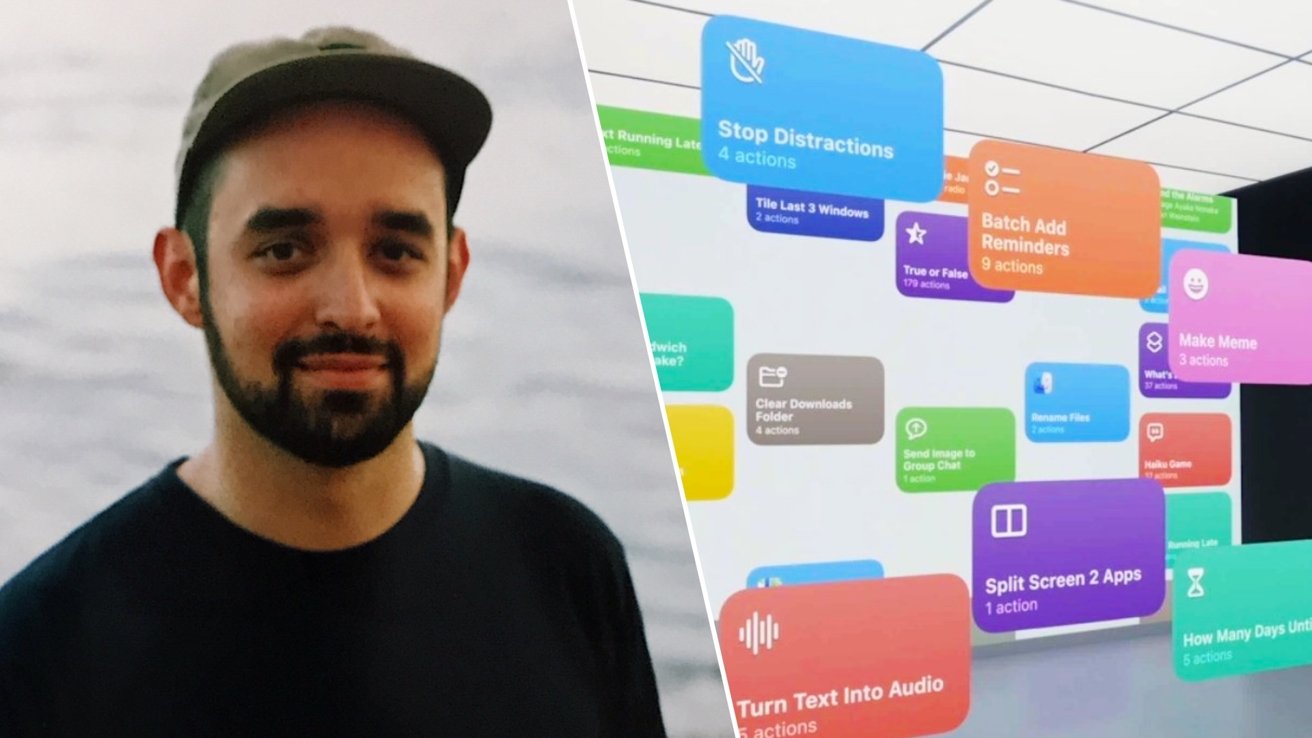
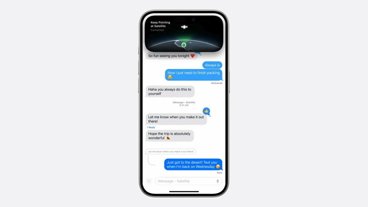
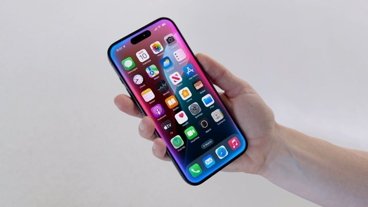
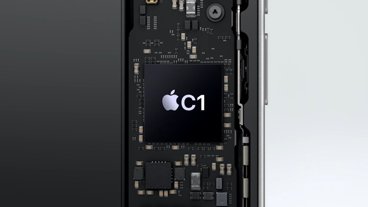
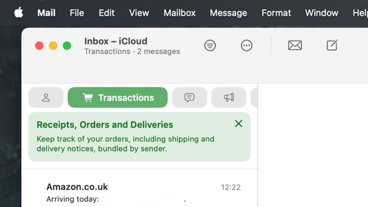

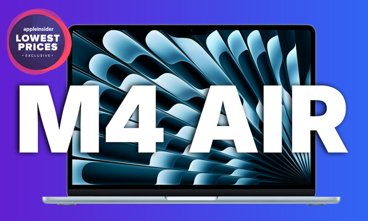

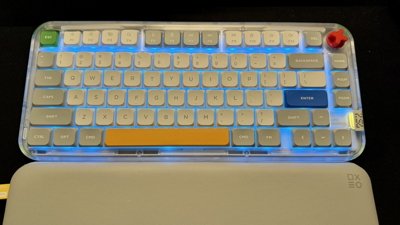
 Thomas Sibilly
Thomas Sibilly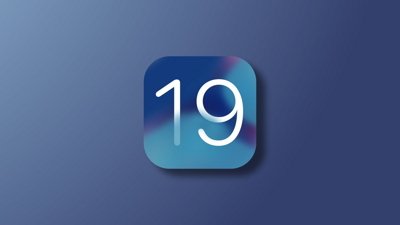
 Wesley Hilliard
Wesley Hilliard
 Marko Zivkovic
Marko Zivkovic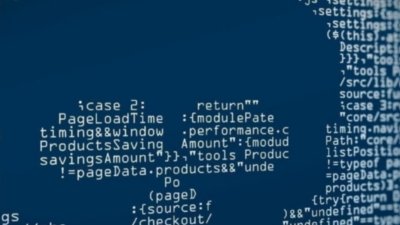
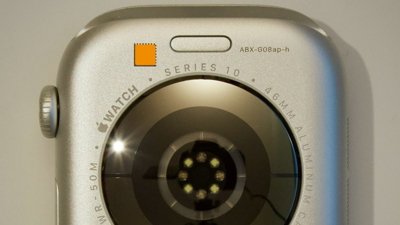
 Malcolm Owen
Malcolm Owen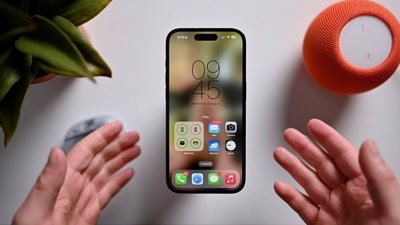
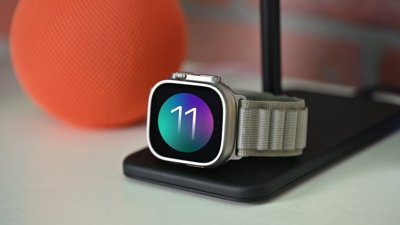
 Amber Neely
Amber Neely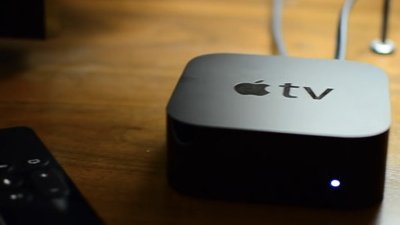
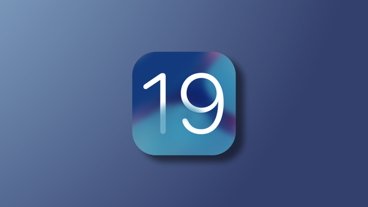
-xl-m.jpg)
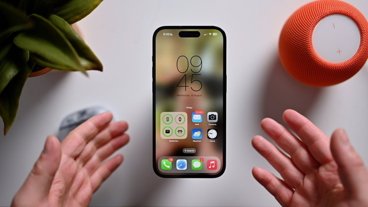



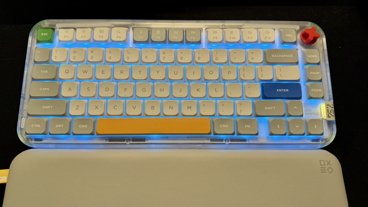
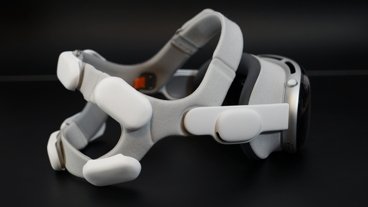
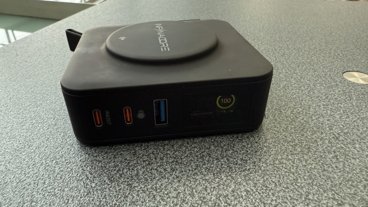

There are no Comments Here, Yet
Be "First!" to Reply on Our Forums ->